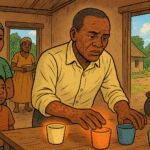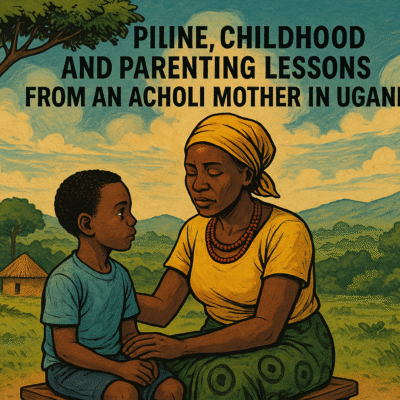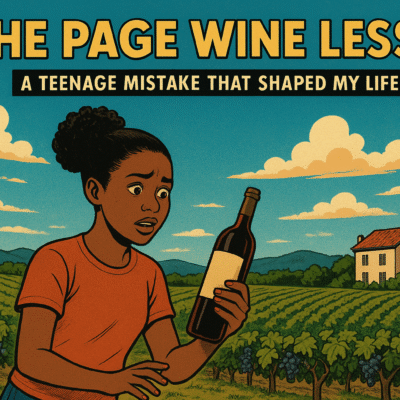How My Village Uncle with Leprosy Infected All the Cups in Our House
When I was a child growing up with my siblings and our mother in Gulu City, Uganda, I had a limited understanding of what leprosy was. If I saw someone with signs and symptoms of leprosy on the road, I didn’t want to greet them. I would simply run. I thought that even saying hello might infect me. I recall saying prayers that my family members do not get the deadly disease. That is how deeply I feared it. Back then, in the 1990s, it was common to see people with leprosy disease where I lived. Little did I know that one day, leprosy would not just come near me but inside our house, and this experience never left my memory.
My mother was a teacher at a Primary School in the west of present-day Gulu City. We lived in the teachers’ quarters, which was basically a compound of grass-thatched tukuls. My mom had the main tukul, which included a sitting area and a bedroom. My sisters shared the kitchen tukul as their bedroom, and I, being the only big boy, slept in another kitchen tukul with our neighbours’ sons. It was humble, but it was home.
One day, this man appeared from my mother’s village. A relative, apparently. He had full-blown leprosy. I was a child and was quite horrified to see all the symptoms of leprosy on his fingers and toes. I hoped, prayed, and even left home for a few hours just to escape any possible contact with him. I thought he was just passing by and would eventually leave. Little did I know he was staying in our home for some days.
When I returned that evening, he was still there. At dinner time, he was still there. And in the most unimaginable twist of fate, I was expected to eat with him. From the same bowl. Because my mother believed that a guest cannot eat alone. As a boy, I was accustomed to eating with male guests, so this practice was not new, except that this time, the guest was someone I had been running away from.
Let me pause here for those born in the late ’90s or after the year 2000: there was a time when families shared food from a single large bowl. There were no individual plates, no buffet line, no excuses. If you were at the table, you ate from the same bowl. So, here I was, about 10 years old, trembling inside, sharing posho and ‘dek boo’, a local Acholi traditional vegetable stew, with a man I had previously been dodging like a stray bullet. This was the beginning of my worst nightmare.
But worse than eating from the same dinner bowl was the cup. You see, my village uncle drank tea and water with the same cups we all used. And since I couldn’t exactly protest (in those days, talking back to adults meant earning a beating that could reset your memory, and my mother is one of a kind), I devised a genius child survival strategy and began secretly marking every cup he used.
With a safety pin, I scratched an “X” under each cup. That was my warning system. If I picked up a cup and saw an X, it meant ‘danger: do not drink from it.’ The strategy worked initially, but as the Leper stayed for more days, I realised one day that all the cups now had an X on them. Every single one. The man had outpaced my marking strategy. He had, without knowing it, baptised all our cups “infected with leprosy”.
My brilliant plan had failed. I could no longer trust any cup in the house, and I was now the thirsty one. I contemplated drinking water from our neighbours but feared my mum would know, and it would have consequences. That’s when it finally hit me: I should have saved one clean cup for myself and hidden it, but it was too late for regrets.
So, I did what any desperate, slightly germophobic village boy would do. I picked one of the already-marked cups, scrubbed it with sand, water, and soap, and even rinsed it with hot water; then, when my mum wasn’t looking, I boiled it. It made using it feel safer. I sanctified that cup as if it were going to carry holy water. None of my siblings or mum knew about this, and this cup became mine alone until the Leper finally left.
I can’t help but laugh at how my childhood brain interpreted danger and survival techniques. I didn’t know then that leprosy isn’t even spread by sharing cups. And if there is any lesson I learned from my childhood story, then it is that one should always hide one clean cup. You never know who is coming to stay.









